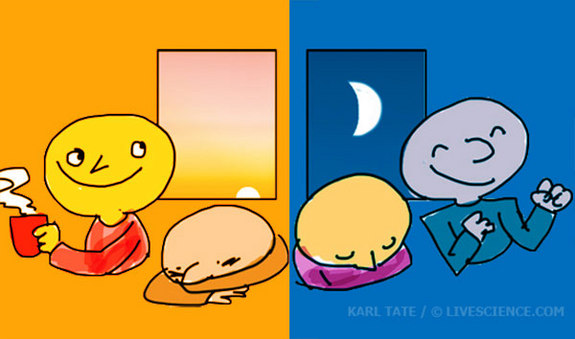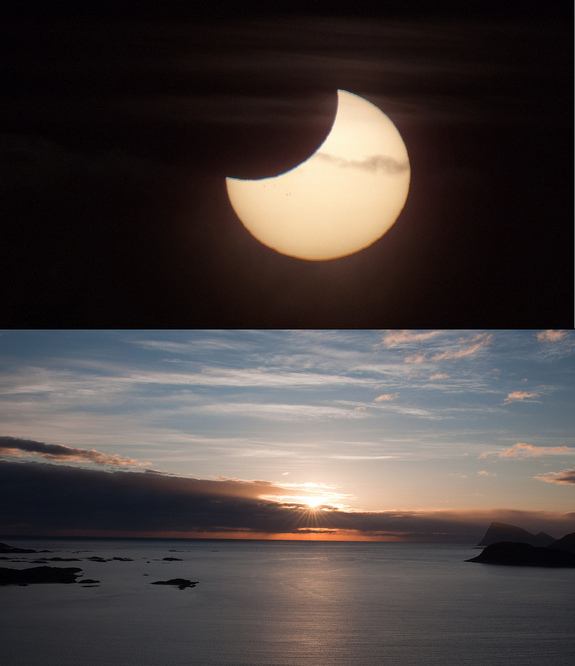
© Karl Tate, LiveScience Infographic ArtistDo you like your morning coffee at 6 a.m. or more like Noon?
It's 6:30 a.m. For "early birds" or "larks," that's prime time. For "night owls," however, such an hour is ungodly.
Most of us are neither pure lark nor owl. But we all know people who can spring out of bed at the crack of dawn or stay alert well into the wee hours. In recent years, science has increasingly shown why these extremes exist.
Right from birth,
our personal biological clocks are already wound. Genetics establishes a person's "chronotype," which is pegged to when his or her body feels up and at 'em.
"People span the range of those who are very early risers to very late setters, and this is genetically determined," said Frederick Brown, a professor of psychology at Penn State.
To a certain extent, behavior and environment - say, routinely pumping iron in a well-lit gym toward midnight - can shift our built-in predispositions. But for those of us squarely in one chronotype camp or the other, in the end, the body is the boss.
"If you're a morning-type person, you can't become an evening type, and vice versa," said Brown.

